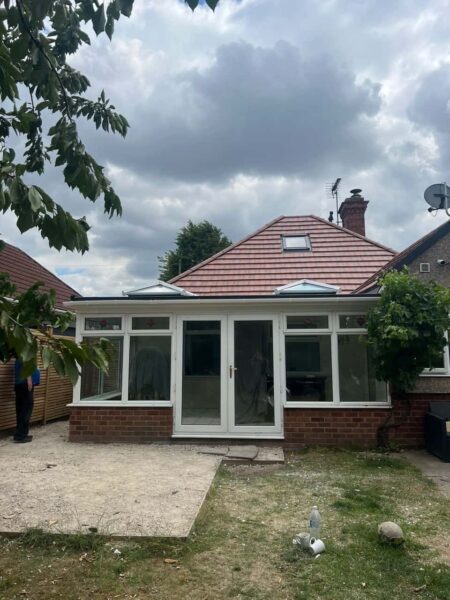Slipped Tiles Are Often Just a Symptom, Not the Root Problem
Finding slipped or displaced tiles on your roof can be concerning — and rightly so. Many homeowners assume that replacing the tile will resolve the issue, but in most cases, slipped tiles are actually a symptom of a deeper problem. The underlying cause is often hidden beneath the surface, meaning that simply repositioning or replacing the tile may only offer a temporary fix. For property owners in Thorne, South Yorkshire, LKP Roofing Thorne provides professional inspections and lasting repair solutions designed to address the real reasons behind slipped roof tiles.
Understanding Why Roof Tiles Slip
Roof tiles are designed to stay firmly in place for many years, even under challenging weather conditions. When they start to move or fall, it’s usually a sign that something more significant is affecting the integrity of the roof. Identifying the underlying cause early helps prevent recurring issues and protects your property from long-term damage.
Some of the most common reasons for slipped tiles include:
- Ageing fixings: Over time, nails, clips, or mortar that hold tiles in place can corrode, loosen, or deteriorate.
- Poor installation: Incorrectly fixed tiles or inadequate overlap during installation can make them more vulnerable to slipping.
- Timber decay: The wooden battens or rafters supporting the tiles may have weakened due to moisture or rot.
- Frost and weather exposure: Continuous freeze-thaw cycles cause expansion and contraction that can loosen fixings and crack mortar.
- Roof movement: Structural shifting, often caused by temperature changes or building settlement, can lead to tile displacement.
- Wind uplift: High winds can catch underneath slightly raised tiles and dislodge them completely.
Each of these issues requires a different approach — and only a detailed roof inspection can determine which one is at fault.
Why Slipped Tiles Should Never Be Ignored
While a single loose tile might seem minor, it can quickly lead to more serious complications if left unaddressed. Even a small gap in your roof covering can allow rainwater, debris, or pests to enter. Over time, this can cause damage to underlay materials, insulation, or even the internal structure of your roof.
Ignoring slipped tiles can lead to:
- Water leaks and damp patches on ceilings or walls.
- Rotting roof battens and compromised timber supports.
- Increased energy loss due to heat escaping through gaps.
- Wider structural deterioration if moisture seeps deeper into the roof.
Addressing the visible damage alone without investigating the cause may mean the problem will return — often worse than before.
Identifying the Root Cause of Slipped Tiles
At LKP Roofing Thorne, we take a thorough, methodical approach to diagnosing the cause of tile movement. Our roofing specialists examine every layer of the roof, from the surface tiles to the substructure, to ensure the correct repair is carried out.
A professional roof inspection typically includes checking:
- Tile condition: Looking for cracks, chips, or signs of brittleness.
- Fixing points: Assessing whether nails or clips are rusted, loose, or missing.
- Mortar integrity: Inspecting ridges, verges, and hips where mortar may have deteriorated.
- Roof battens: Ensuring wooden battens are dry, solid, and capable of holding fixings securely.
- Underlay condition: Checking for tears, shrinkage, or water damage that may have weakened the base layer.
- Ventilation and drainage: Ensuring moisture isn’t being trapped under tiles, which can accelerate decay.
Only once the underlying issues are identified can effective, lasting repairs be made.
Repairing the Real Issue — Not Just the Symptom
Replacing slipped tiles may restore the appearance of your roof temporarily, but without addressing the root cause, the problem will likely reoccur. Long-term solutions may include:
- Replacing corroded nails or clips with modern, weather-resistant fixings.
- Renewing rotten battens to restore a stable foundation for tiles.
- Re-laying sections of the roof where the alignment or overlap has been compromised.
- Installing new underlay membranes to prevent water penetration.
- Improving ventilation or insulation to reduce condensation-related damage.
LKP Roofing Thorne ensures that every repair strengthens the overall roof structure, not just the affected area. This comprehensive approach prevents future movement and enhances the longevity of your roof.
Preventing Future Tile Slippage
Once the root cause has been resolved, regular maintenance plays a crucial role in keeping your roof in top condition. Proactive care can help identify early signs of wear before they lead to visible issues such as slipped tiles.
Preventative steps include:
- Scheduling periodic roof inspections — ideally once a year or after severe weather.
- Clearing gutters and valleys to ensure proper water flow and reduce pressure on the roof.
- Replacing damaged or cracked tiles promptly to maintain structural balance.
- Checking mortar joints on ridge and hip tiles to ensure they remain solid.
- Monitoring for signs of damp in loft spaces, which can indicate hidden leaks.
Routine maintenance not only prevents tile movement but also extends the lifespan of your roof and preserves your property’s value.
Why Professional Expertise Matters
Roofing repairs are not just about aesthetics — they’re about safeguarding the structure of your home. Attempting to fix slipped tiles without professional assessment can mask serious problems beneath the surface. Experienced roofers, such as those at LKP Roofing Thorne, have the skills and knowledge to identify both visible and hidden faults. Their expertise ensures that each repair contributes to the long-term performance and weather resistance of your roof.
A professional approach also ensures that the correct materials are used for your specific roof type, maintaining compatibility and durability in all weather conditions.
Conclusion
Slipped roof tiles are rarely the main issue — they’re a warning sign that something deeper needs attention. By understanding and addressing the root cause, you can prevent repeated damage, protect your home, and extend the life of your roof. For thorough inspections and lasting repair solutions in Thorne, South Yorkshire, contact LKP Roofing Thorne. Our team ensures every roof we work on is secure, weatherproof, and built to withstand the challenges of the British climate for years to come.
Call us on: 01405 808 195
Click here to find out more about LKP Roofing Thorne
Click here to complete our contact form and see how we can help with your roofing needs.

